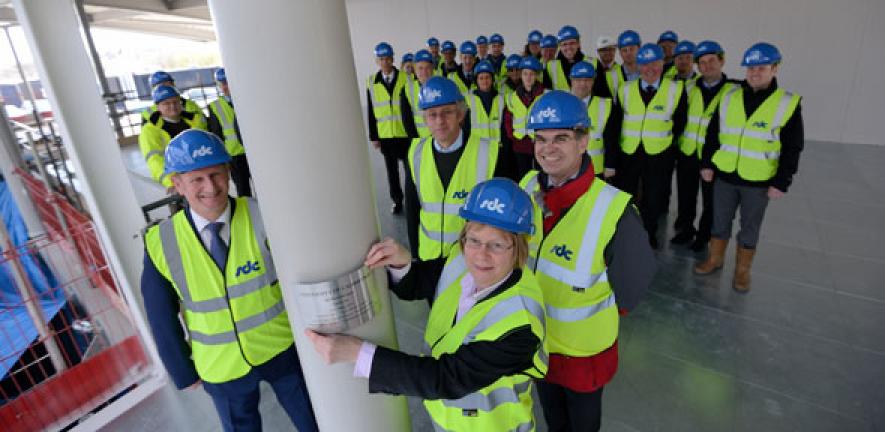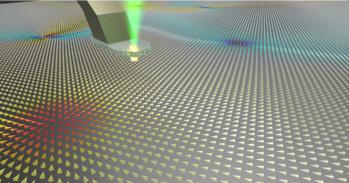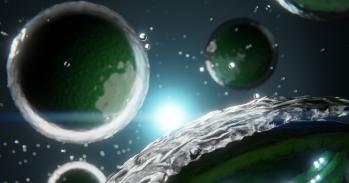
Topping out event for pioneering new building which will provide a home for blue skies thinking and interaction with industry.
Topping out event for pioneering new building which will provide a home for blue skies thinking and interaction with industry.
The Maxwell Centre will enable a pioneering way for industry and academia to work together in partnership.
Professor Andy Parker
Pioneering “blue skies” research is a step closer to having a home after a topping out ceremony was held at a centrepiece building on the West Cambridge site.
The new facilities will see research scientists from industry occupying laboratory and desk space alongside Cambridge research groups, with the aim of creating a two-way flow of ideas and exposing the best early career researchers to scientific problem-solving that relates directly to industrial need.
Once completed the Maxwell Centre will offer laboratory and meeting spaces for more than 230 people.
Professor Andy Parker, Head of Department at the Cavendish Laboratory, said: “We aim for world-leading excellence in teaching and research in Cambridge. This requires the best facilities and the Maxwell Centre will enable a pioneering way for industry and academia to work together in partnership.”
The Maxwell Centre will build on the research activity currently supported by the Winton Programme for the Physics of Sustainability at Cambridge’s Cavendish Laboratory, where the focus has been on original, risk-taking science since its inception in March 2011, emphasising fundamental physics research relevant to areas such as renewable energy.
Pioneering research from the Winton programme, including the new physics of materials that could harness superconductivity to revolutionise battery life, will be able to flourish at the centre.
Many other aspects of fundamental physics will be fostered, including advanced scientific computing, the theory of condensed matter, advanced materials and the physics of biology and medicine.
Professor Parker added that the building work was on schedule and on cost despite adverse weather conditions during its construction and said: “I can see the building rising from my office window. I have been very impressed by the hard work and professionalism of the team, both on-site and at the project meetings which I have attended. I would also like to thank the Cavendish team who have been helping to deliver the project.”
The Centre is named to commemorate physicist James Clerk Maxwell, who was appointed the first Professor of Experimental Physics at Cambridge in 1871 and who discovered electromagnetism and founded statistical mechanics.
Traditionally topping out ceremonies mark the point at which the final beam (or its equivalent) has been placed atop a building. Elements of construction remain to be carried out at the Centre, which is located between the Physics of Medicine building and the William Gates building on the West Cambridge site. It is due to open its doors in late 2015.
Among those present at the ceremony were Professor Lynn Gladden, Pro-Vice-Chancellor for Research, and Francis Shiner, Managing Director of SDC Builders Ltd, the construction contractor carrying out the work on behalf of the University.
More information:
- Funding for the project from the non-governmental sector was raised partly through philanthropic gifts and matched by industrial contracts with a very wide range of industries, including those collaborating with cognate departments such as Materials Science and Chemistry.
- The Higher Education Funding Council for England (HEFCE) is providing a significant contribution to complement the non-governmental sources of funding for the programme.

The text in this work is licensed under a Creative Commons Attribution 4.0 International License. For image use please see separate credits above.




